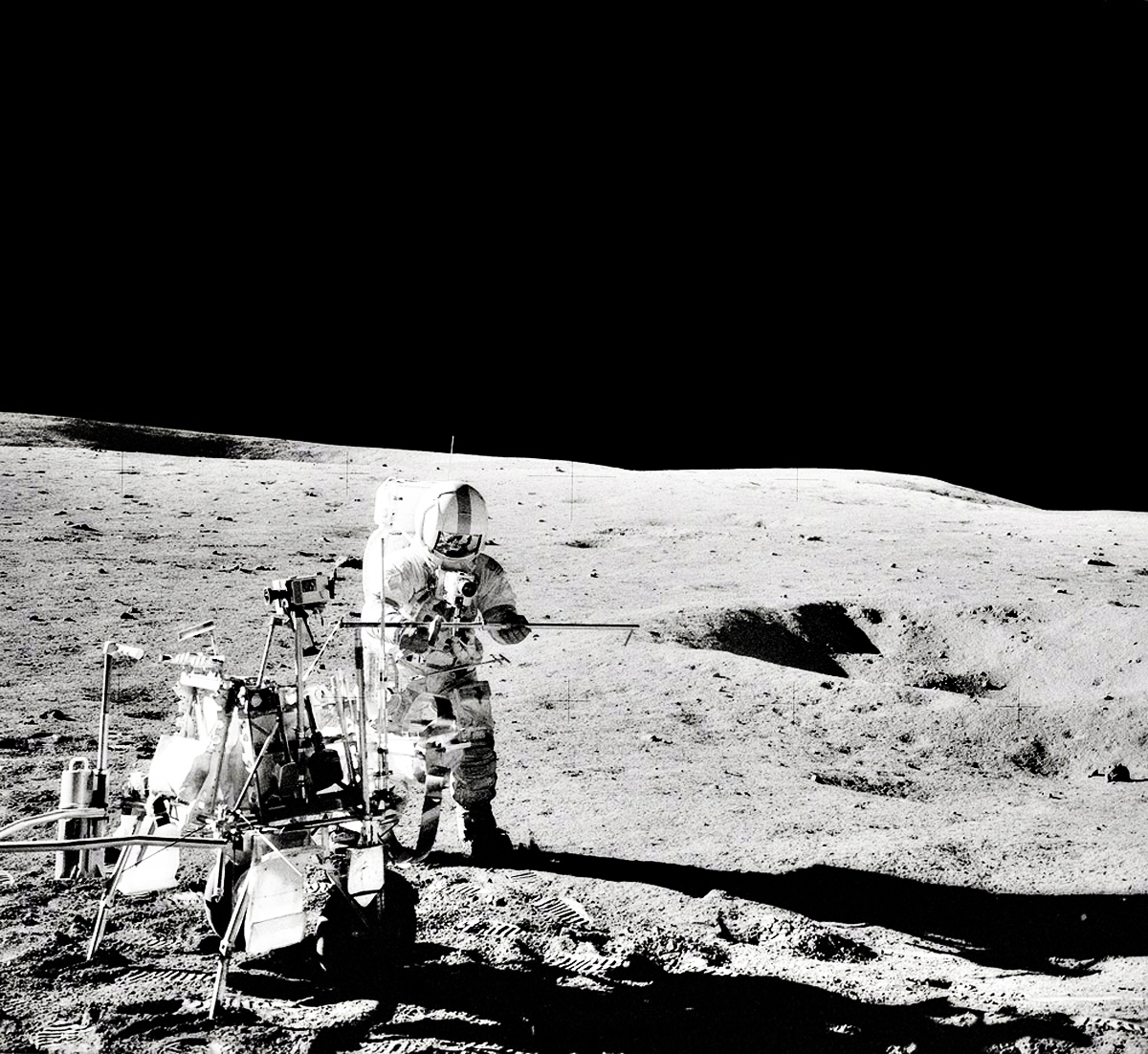
Apollo 14: Walkin' on the Moon: NASA's Astronauts Bring Golf to the Moon on February 05, 1971
Apollo 14: Walkin' on the Moon: NASA's Astronauts Bring Golf to the Moon: On February 5, after suffering some initial problems in docking the lunar and command modules, Shepard and Mitchell descended to the lunar surface on the third U.S. moon landing.
Apollo 14 was the fourth crewed moon landing mission (but the third to touch down, since Apollo 13 didn't make it all the way) and is most famous for being the first and only mission in which an astronaut played golf on the moon. Click through this gallery to see photos from the adventures of the Apollo 14 crew.
On Feb. 6, 1971, Apollo 14 astronaut Alan Shepard became the first person to play golf on the moon. He smuggled a makeshift golf club head onto the spacecraft inside a sock. The first ball he hit veered into a nearby crater, but with a solid second swing, the next ball soared for “miles and miles and miles” in the moon’s microgravity. Here, Shepard stands by the Modular Equipment Transporter, a cart for lugging equipment on the lunar surface.

Apollo 14's prime geologic target was Cone Crater. The crew planned to climb the slope, reach the rim - which was 300 feet (91 meters) above the landing site — and then look for rocks that could have flown up from the moon's bedrock after a meteor smashed into the surface millions of years earlier.
The astronauts found the climb harder than expected. Rocks littering the slope forced them to carry the cart, and the steep climb meant they had to rest often. Mission Control asked the astronauts for updates on how close they were to the rim; the astronauts guessed they were nearby, but it was hard to say for sure without landmarks to help them estimate the distance.
Eventually, Shepard and Mitchell ran out of time and were forced to move on. When the pictures were analyzed later, geologists estimated the astronauts missed the rim by a mere 100 feet.
Before leaving the moon, Shepard performed an entertaining stunt for the television audience watching from home. He brought a 6-iron with him as well as a “little white pellet that's familiar to millions of Americans”, he said to the viewers back on Earth. In front of the camera, he hit one golf ball into a nearby crater and a second one that went “miles and miles and miles”, according to Shepard. But in reality, neither ball traveled more than a mile, according to collectSPACE editor Robert Pearlman.
Space.com / NASA / Wikipedia / Encyclopedia Britannica /
Lunar Sciaence and Exploration.edu / Smithsonian National Air and Space Museum.edu /
Apollo 14: Walkin' on the Moon: NASA's Astronauts Bring Golf to the Moon on February 05, 1971 (YouTube) 

Space Shuttle Discovery is launched on a mission to service the Hubble Space Telescope on February 11, 1997
Space Shuttle Discovery is launched on a mission to service the Hubble Space Telescope: Space Transportation System (STS-82): On February 11, after After a spectacular night launch, the Shuttle completed its rendezvous with Hubble Space Telescope on February 13.
Over the next four days, five spacewalks were undertaken to renovate Hubble.

On February 13 astronauts Mark Lee and Steven Smith carried out the mission's first of five spacewalks.
EVA-1: February 13, duration 6 hours, 42 minutes. One of Hubble's solar arrays was unexpectedly disturbed by a gust of air from Discovery's airlock when it was depressurized, but was not damaged.
Astronauts Lee and Smith removed two scientific instruments from Hubble, the Goddard High Resolution Spectrograph (GHRS) and Faint Object Spectrograph (FOS), and replaced them with the Space Telescope Imaging Spectrograph (STIS) and Near Infrared Camera and Multi-Object Spectrometer (NICMOS), respectively. STIS expected to shed further light on supermassive black holes.
EVA-2: February 14, duration 7 hours, 26 minutes. Astronauts Harbaugh and Tanner replaced a degraded Fine Guidance Sensor and a failed Engineering and Science Tape Recorder with new spares. Also installed a new unit called the Optical Control Electronics Enhancement Kit, which will further increase the capability of the Fine Guidance Sensor. During this EVA astronauts noted cracking and wear on thermal insulation on side of telescope facing the sun and in the direction of travel.
EVA-3: February 15, duration 7 hours, 11 minutes. Astronauts Lee and Smith removed and replaced a Data Interface Unit on Hubble, as well as an old reel-to-reel- style Engineering and Science Tape Recorder with a new digital Solid State Recorder (SSR) that will allow simultaneous recording and playback of data. Also changed out one of four Reaction Wheel Assembly units that use spin momentum to move the telescope toward a target and maintain it in a stable position. After this EVA, mission managers decided to add EVA 5 to repair the thermal insulation on HST.
EVA-4: February 16, duration 6 hours, 34 minutes. Astronauts Harbaugh and Tanner replaced a Solar Array Drive Electronics package which controls the positioning of Hubble's solar arrays. Also replaced were covers over Hubble's magnetometers and thermal blankets of multi-layer material over two areas of degraded insulation around the light shield portion of the telescope just below the top of the observatory. Meanwhile, inside Discovery, Horowitz and Lee worked on the middeck to fabricate new insulation blankets for HST.
EVA-5: February 17, duration 5 hours, 17 minutes. Astronauts Lee and Smith attached several thermal insulation blankets to three equipment compartments at the top of the Support Systems Module section of the telescope which contain key data processing, electronics and scientific instrument telemetry packages.
No sixth spacewalk was needed; a suspect Reaction Wheel Assembly has tested out and did not need to be replaced.
STS-82 EVA totaled 33 hours, 11 minutes about two hours shy of total EVA time recorded on the first servicing mission.
The Hubble Space Telescope was released back into orbit at 06:41 GMT on February 19. Discovery landed on Runway 15 at Kennedy Space Center at 08:32 GMT on February 21.
NASA / Wikipedia / Encyclopedia Britannica /
National Space Society.org / European Space Agency / Smithsonian National Air and Space Museum.edu /
Space Shuttle Discovery is launched on a mission to service the Hubble Space Telescope on February 11, 1997 (YouTube) 
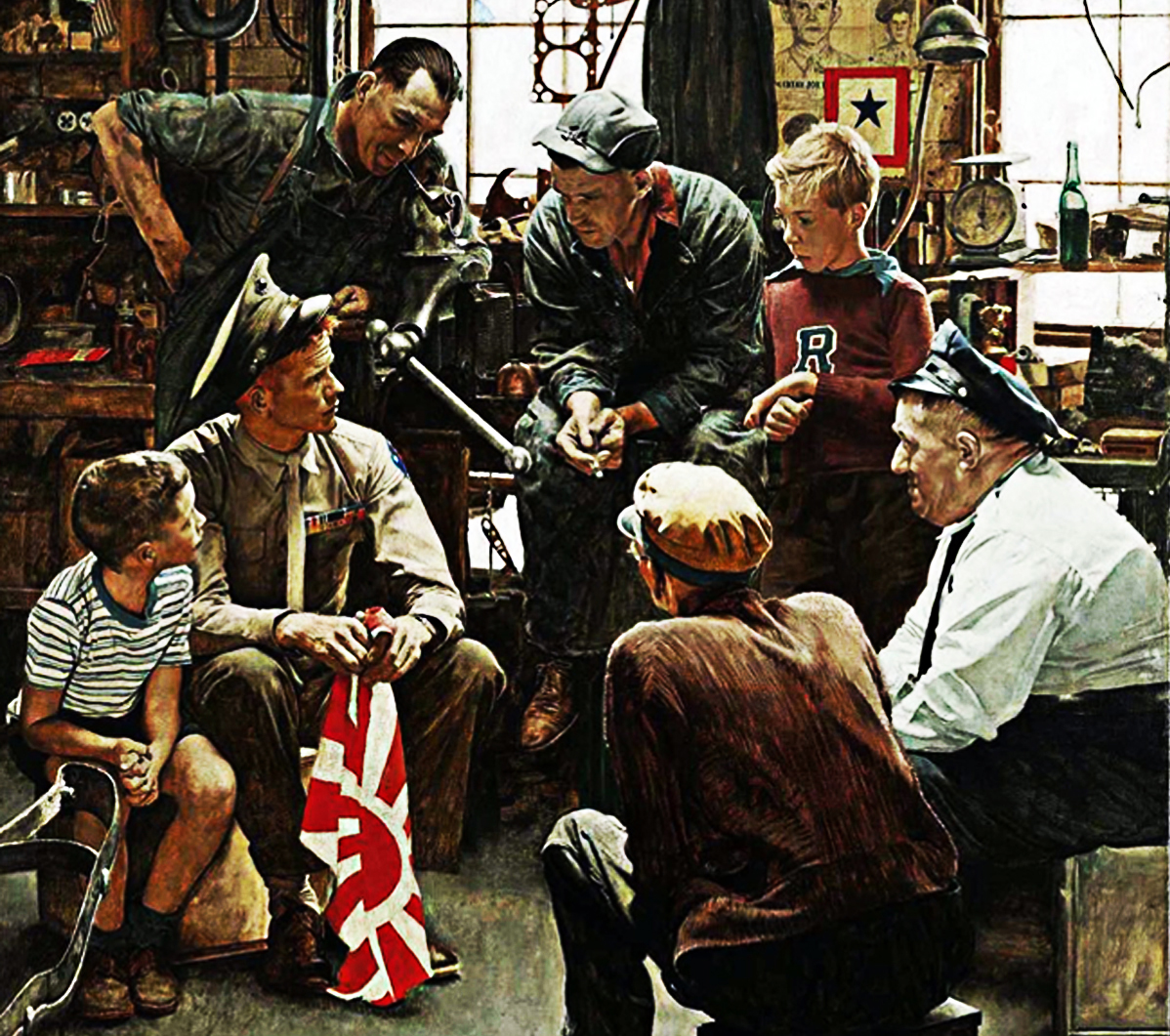
Understanding Military Terminology
Reattack recommendation
(DOD) An assessment, derived from the results of battle damage assessment and munitions effectiveness assessment, providing the commander systematic advice on reattack of a target
Also called RR.
See also Assessment; Battle Damage Assessment; Munitions Effectiveness Assessment; Target.
Joint Publications (JP 3-60) Joint Targeting - Just Security
Receiving ship
(DOD) The ship in a replenishment unit that receives the rig(s).
Joint Publications (JP 4-03) Joint Bulk Petroleum and Water Doctrine
Reception
(DOD)
1. All ground arrangements connected with the delivery and disposition of air or sea drops.
2. Arrangements to welcome and provide secure quarters or transportation for defectors, escapees, evaders, or incoming agents.
3. The process of receiving, off- loading, marshalling, accounting for, and transporting of personnel, equipment, and materiel from the strategic and/or intratheater deployment phase to a sea, air, or surface transportation point of debarkation to the marshalling area.
Joint Publications (JP 3-35) Deployment and Redployment Operations
Recognition
(DOD)
1. The determination by any means of the individuality of persons, or of objects such as aircraft, ships, or tanks, or of phenomena such as communications- electronics patterns.
2. In ground combat operations, the determination that an object is similar within a category of something already known
Joint Publications (JP 3-01) Countering Air and Missile Threats
Joint Publication - Department of Defense Dictionary of Military and Associated Terms
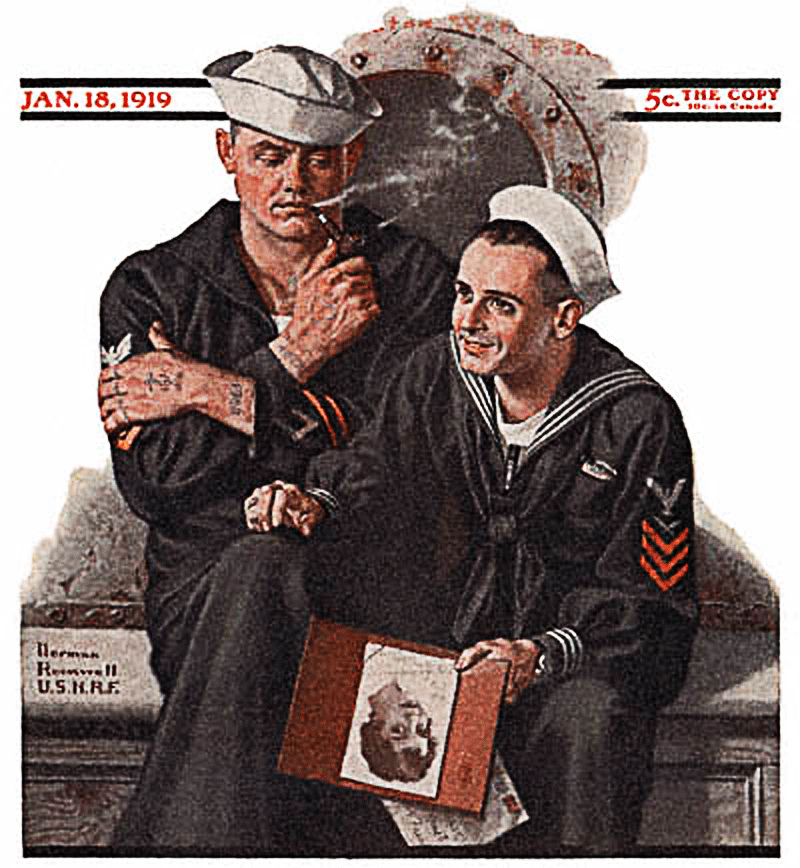
The Old Salt’s Corner
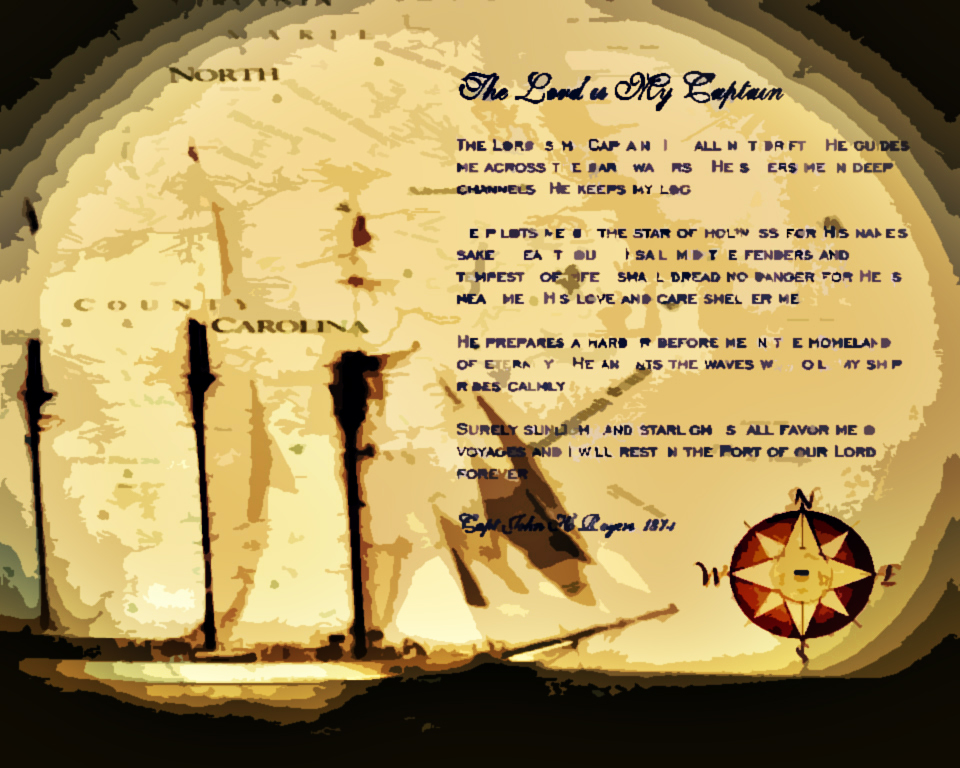
The Lord is my pilot, I shall not go adrift;
He lighteth my passage across dark channels;
He steereth me through the deep waters,
He keepeth my log.
He guideth me by the evening star for my safety's sake.
Yes, though I sail mid the thunders and tempests of life,
I fear no peril, for Thou art with me,
Thy stars and heavens, they comfort me.
The vastness of the sea upholds me.
Surely fair winds and safe harbors shall be found
All the days of my life;
And I shall dock, secure forever.
~ Unknown

“I’m Just Sayin”
“No man or woman who tries to pursue an ideal in his or her own way is without enemies.”
“Opinions differ most when there is least scientific warrant for having any.”
“The man who never makes a mistake always takes orders from one who does.
No man or woman who tries to pursue an ideal in his or her own way is without enemies.”
~ Daisy Bates

“Thought for the Day”
“Change your thoughts and you change your world.”
“The trouble with most of us is that we would rather be ruined by praise than saved by criticism.”
“It's always too early to quit.”
“We tend to get what we expect.”
“Getting people to like you is merely the other side of liking them.s”
“Empty pockets never held anyone back.
Only empty heads and empty hearts can do that.”
“Stand up to your obstacles and do something about them.
You will find that they haven't half the strength you think they have.”
“Believe in yourself!
Have faith in your abilities!
Without a humble but reasonable confidence in your own powers you cannot be successful or happy.”
“Every problem has in it the seeds of its own solution.
If you don't have any problems,
you don't get any seeds.”
“Repetition of the same thought or physical action develops into a habit which,
repeated frequently enough,”
becomes an automatic reflex.
“Four things for success:
work and pray,
think and believe.”
“It is of practical value to learn to like yourself.
Since you must spend so much time with yourself
you might as well get some satisfaction out of the relationship.”
~ Norman Vincent Peale

“What I Learned”
“A loving heart is the truest wisdom.”
“The pain of parting is nothing to the joy of meeting again.”
“Life is made of ever so many partings welded together.”
“It is a melancholy truth that even great men have their poor relations.”
“A day wasted on others is not wasted on one's self.”
“There is nothing so strong or safe in an emergency of life as the simple truths.”
“No one is useless in this world who lightens the burden of it to anyone else.s”
“It is a far, far better thing that I do,
it is a far, far better rest that I go to,
than I have ever known.”
“Home is a name, a word,
it is a strong one;
stronger than magician ever spoke,
or spirit ever answered to,
in the strongest conjuration.”
~ Charles Dickens
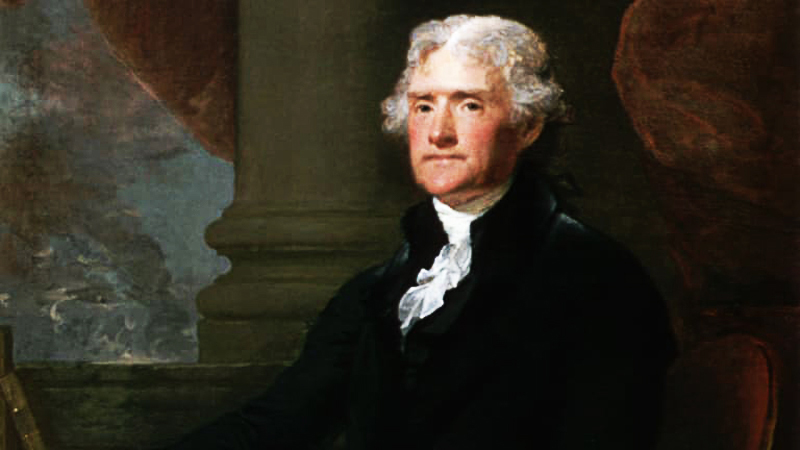 Mr. Answer Man Please Tell Us: What Is the Insurrection Act?
Mr. Answer Man Please Tell Us: What Is the Insurrection Act?
Thomas Jefferson Signed the Insurrection Act in 1807 to Foil a Plot by Aaron Burr
With his political career in ruins after killing Alexander Hamilton, Aaron Burr set off to claim lands in the Southwest—and President Jefferson intended to stop him.
The Insurrection Act gives U.S. presidents the authority to deploy active duty military to maintain or restore peace in times of crisis. The Insurrection Act was invoked numerous times in the 20th century, most famously when Dwight D. Eisenhower sent the 101st Airborne Division to enforce the desegregation of public schools in Little Rock, Arkansas.
But the origins of the Insurrection Act date back more than 200 years to a bizarre chapter in American history - when Aaron Burr plotted to raise an army and establish his own dynasty in either the Louisiana Territory or Mexico.
Burr, a decorated Revolutionary War officer and senator from New York, served as vice president during Thomas Jefferson’s first term. Burr had grand political aspirations, but they were dashed after he killed his rival Alexander Hamilton in a duel in 1804.
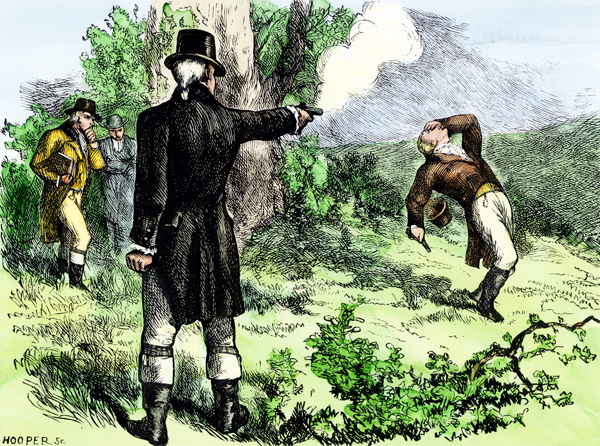
After Duel With Hamilton, Burr Sets Sights on Louisiana
Even though dueling was illegal, Burr was never arrested or tried for Hamilton’s murder, but it effectively ended Burr’s political career. With no prospects in Washington, D.C. or New York, Burr set his sights on the West, namely the newly acquired Louisiana Territory and Mexican-owned lands in the Southwest.
The details of Burr’s plot were never clear, but it involved mustering an army to invade Mexico under the pretense of a war with Spain, and then keeping the conquered land for himself. Burr thought he had an ally in General James Wilkenson, commander of the U.S. Army and first governor of the Louisiana Territory, but when rumors of Burr’s plot leaked into the newspapers, Wilkenson turned on his co-conspirator.
In a letter sent on October 21, 1806, Wilkenson spilled the details of the plot to Jefferson without mentioning Burr by name. But Jefferson had already grown concerned enough about Burr’s strange activities that Jefferson had sent his own letter to Secretary of State James Madison asking if the Constitution granted him authority to deploy the army to stop a rebellion.
In his reply, Madison said no.
“It does not appear that regular Troops can be employed, under any legal provision agst. insurrections”, wrote Madison, “but only agst. expeditions having foreign Countries for the object.”
Both Jefferson and Madison were strict interpreters of the Constitution and wouldn’t dare exercise authority that wasn’t explicitly written in the founding document, so they needed to convince Congress to give Jefferson that power. And to do that, they first needed proof of Burr’s conspiracy. That’s where Wilkenson’s letter comes in.
“Jefferson was looking for a legitimate source of authority on Burr’s plot and he was willing to believe Wilkenson, even though historians suggest that Jefferson knew darn well that Wilkenson was a liar with his own suspect reputation”, says John Fea, a history professor at Messiah College. “But Jefferson needed a source to move the gears to try to stop Burr, who was his biggest fear.”

Jefferson Orders Burr's Capture
Armed with Wilkenson’s “proof”, Jefferson issued a proclamation on November 27, 1806 that laid out the plot and enjoined all military officers, both state and federal, to
“to be vigilant… in searching out and bringing to condign punishment all persons engaged or concerned in such enterprise, in seizing and detaining, subject to the disposition of the law, all vessels, arms, military stores, or other means provided or providing for the same, and, in general, in preventing the carrying on such expedition or enterprise by all lawful means within their power.”
“Jefferson essentially puts a bounty on Burr’s head”, says Fea, and within weeks, an Ohio militia seized boats belonging to Burr’s ragtag army and raided a private island on the Ohio River that served as a military encampment.
But Burr evaded capture and rumors continued to swirl that he was recruiting soldiers en route to the Louisiana Territory and soliciting help from Britain to establish his spinoff nation in the West. Jefferson still refused to deploy the standing U.S. Army to track down Burr and quash the rebellion once and for all, a reticence that was mocked by his political enemies, the Federalists.
“Jefferson, to his credit, says I’m not going to act unless the Constitution says I can act”, says Fea. “The Federalists take a much broader view of the Constitution. If the Constitution doesn’t outright condemn it, then it’s OK.”
Jefferson stuck to his principles and in December of 1806 asked Congress to pass a bill “authorising the emploiment of the land or Naval forces of the U.S. in cases of insurrection.” This legislation, known as the Insurrection Act, would take another three months to become law. When it was finally signed on March 3, 1807, Aaron Burr had already been in custody for 11 days.
So while the Insurrection Act was written expressly to foil Burr’s plot, it wasn’t used to capture him. The very first time the Insurrection Act was actually invoked was a year later in 1808, when American merchant ships in the Great Lakes flouted Jefferson’s trade embargo with the British. In response, Jefferson accused the rogue traders of “forming insurrections against the authority of the laws of the United States” and authorized the military to take action.
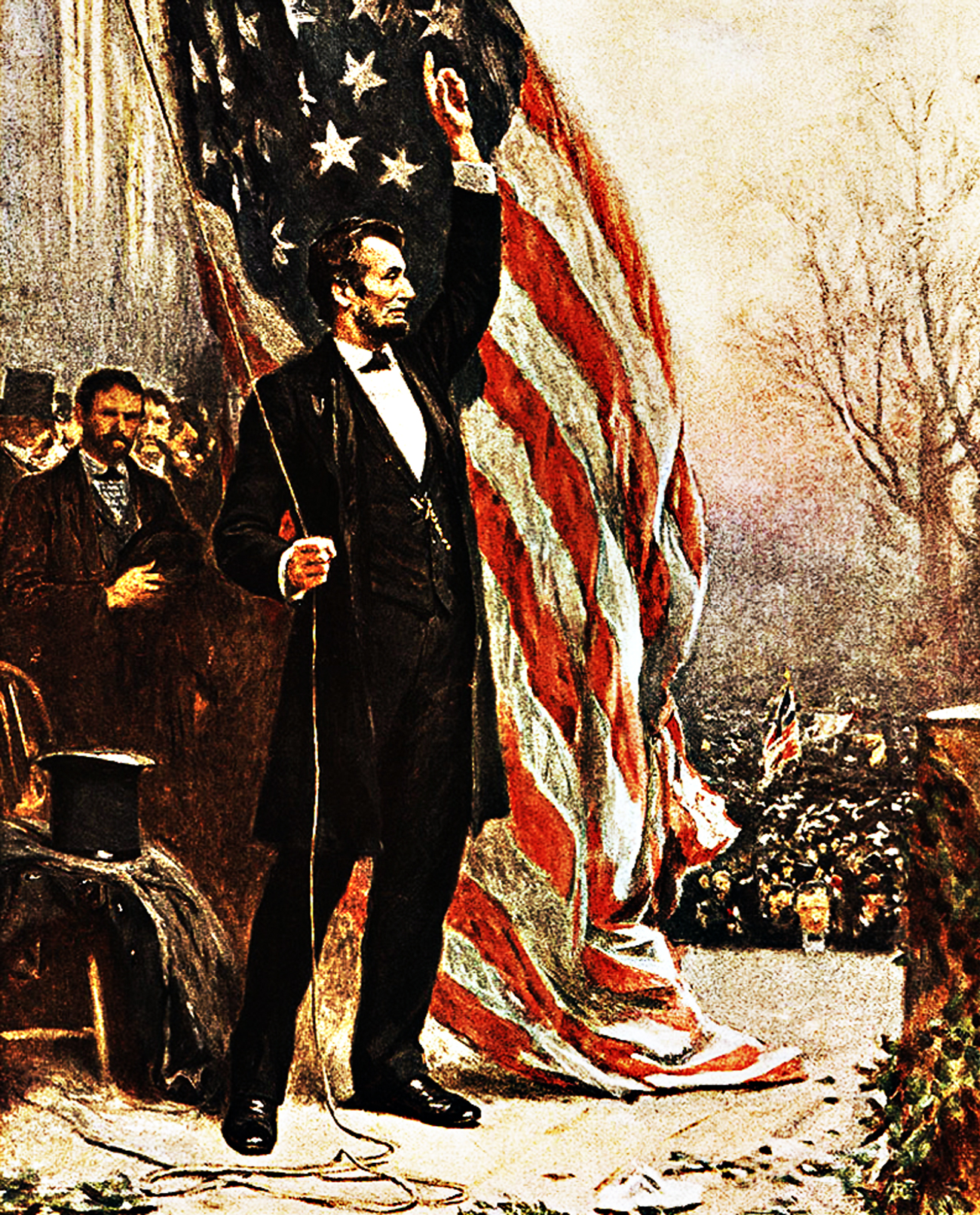
When Has the Insurrection Act Been Invoked?
Since 1807, the Insurrection Act has been amended several times to meet different political challenges.
In 1861, Abraham Lincoln expanded the law to form the legal basis for waging the American Civil War. Without it, he wouldn’t have had the authority to send federal troops into a state without the governor’s permission.
After the Civil War, the Insurrection Act was further amended to give the president authority to enforce the 14th Amendment and the conditions of Reconstruction in the South. That authority is now found in Section 253 of Title 10 of the U.S. Code, which gives the president the right to take military action within a state when
“any part or class of its people is deprived of a right, privilege, immunity, or protection named in the Constitution and secured by law, and the constituted authorities of that State are unable, fail, or refuse to protect that right, privilege, or immunity, or to give that protection.”
That’s the same authority invoked during the civil rights era by Presidents Eisenhower, John F. Kennedy and Lyndon Johnson to deploy troops to the South to enforce desegregation in defiance of the governors of Arkansas, Mississippi and Alabama.
The Insurrection Act was last invoked in 1992 under President George H.W. Bush, after Peter Wilson, then-governor of California, requested help to quell widespread riots after four police officers charged in the beating of Rodney King were acquitted.
In 2005, after Hurricane Katrina devastated Louisiana and the Gulf Coast, President George W. Bush explored expanding the Insurrection Act to place command of the region's National Guard under federal control. Ultimately, Bush declined to invoke the act, although it was eventually amended in 2006 to broaden the scope under which the president may act under the law.
History Channel / Wikipedia / Berkeley Law.edu / Cornell Law School.edu /
The National Association of Rural Landowners - NARLO.org / Mental Floss / Quora /
What Is the Insurrection Act? (YouTube) 

NAVSPEAK aka U.S. Navy Slang
Zero: Officer. Usually applied to a young junior officer, such as an O-1 (ENS (Ensign) / 2ndLt (Second Lieutenant)), and O-2 (LTJG (Lieutenant (Junior Grade))/ 1stLt (First Lieutenant)) or an O-3 (Lieutenant / Captain).
Zippo:
1. A flame thrower attached to a small boat, or a boat so equipped.
2. (Derogatory) Nickname for the USS Forrestal (CV 59) after the fire on 29 July 1967 that killed 134 sailors and injured 161 on the aircraft carrier.
Zoom Bag: Navy flight suit, generally fireproof Nomex.
Zoomie:
1. An aviator; generally refers to a USAF pilot or navigator/combat systems officer.
2. (Especially in the plural, “Zoomies”) On a nuclear ship, a (nonstandard) unit of radiation, such as is present in a compartment containing or near nuclear weapons or a naval nuclear reactor. “I wouldn't go back there unless you want to get some zoomies!” Also used of radiation picked up on one's personal dosimeter (the radiation measuring devices worn by weapons- or nuclear-trained personnel). “How many zoomies did you get today?”
3. Cadet at the U.S. Air Force Academy.
Zone inspection: A formal inspection of spaces conducted by a team headed by the XO.
ZUG: Negative. An obsolete / unofficial procedure signal. Retired RMs may often use ZUG in place of “no” or “negative”.
ZUT: (Morse radiotelegraphy): “forever”. An obsolete / unofficial procedure signal. Retired RMs may have a ZUT certificate or even a ZUT tattoo.
Wiktionary.org

Just for you MARINE
Zero: Pronounced zee-ROW in an exaggerated manner, as used by Drill Instructors at the end of a count-down implying that recruits are to immediately cease all activity and remain silently in place. Used by Marines to gain the immediate attention of all personnel in the area without calling attention on deck.
Zero: Disparaging term used amongst enlisted personnel when referring to officers. Derived from the “o” in officer.
Zero-dark Thirty: Very early hours before dawn. See also military time, O-dark thirty.
Zero-stupid thirty:An unnecessarily early time for which personnel are required to assemble for an activity. See also military time, O-dark thirty.
Zoomie: Pilot usually an Air Force pilot.
Zoomie U: United States Air Force Academy
Wikipedia.org

Naval Aviation Squadron Nicknames
HT-18 Helicopter Training (HT) Squadron EIGHTEEN - nicknamed the “Vigilant Eagles”
United States Navy - Marine Corps Commander, Helicopter Training Air Wing FIVE - Naval Air Station Milton, Florida. / HT-18: March 1, 1972 - present
Wikipedia.org

Where Did That Saying Come From?

“A little of what you fancy does you good:”
Meaning: A euphemistic way of expressing the benefits of sex.
History: This proverbial saying was first the title of a vaudeville song, made famous by the risqué Victorian singer Marie Lloyd. Lloyd was an immensely popular music hall performer in England towards the end of Queen Victoria's reign and into the early 20th century, much to the chagrin of the moralists of the day, who did everything they could to prevent her from performing. This included having her refused entry to the USA in 1913 for “moral turpitude”.
The songs she made popular were apparently fairly harmless but she managed to deliver even chaste material with a certain lewdness. The style she adopted was of a winking familiarity with the audience, all of whom were of course happy to play along with every double entendre.
The chorus of “A Little of What You Fancy Does You Good”, goes:
I always hold in having it if you fancy it
If you fancy it that’s understood
And suppose it makes you fat? I don’t worry over that
‘Cos a little of what you fancy does you good..
No one present at performances imagined that Lloyd was singing about cream cakes, although the line has in fact been used to advertise them in recent years. The sexual innuendo that was ever-present in the music hall has now largely been forgotten.
Marie Lloyd has been a continuing influence on British variety and comedy acts, being the template for artists like Max Miller and inspiration for the saucy euphemism of the Carry On film series. It is clear that Mae West (“I'm the kinda girl who works for Paramount by day, and Fox all night”) also took inspiration from Lloyd's (“I sits amongst the cabbages and pea"”) manner of stage patter.
Phrases.org.uk

Science & Technology

FEATURE: Doomed pair of supermassive black holes the closest to collision ever seen
• Scientists use machine learning to fast-track drug formulation development
Astronomers find the most distant stars in our galaxy halfway to Andromeda
• Astronomers suggest more galaxies were formed in the early universe than previously thought
• Researchers discover chimpanzee communities have local gestural dialects
A Bayesian machine based on memristors
• New mechanism uncovered behind osteoarthritis could inform new treatments
• Cat locomotion could unlock better human spinal cord injury treatment
Children near airports may be exposed to dangerous levels of lead
• Human-approved medication brings back “lost” memories in mice
• New study reveals wide diversity of galaxies in the early universe
Phys.org / MedicalXpress / TechXplore

FEATURE: Study uncovers distinct time cell populations in the bat hippocampus
• A method to reliably fabricate transition metal dichalcogenide field-effect transistors on a wafer-scale
Study clarifies mystery of crocodilian hemoglobin
• New results reveal surprising behavior of minerals deep in the Earth
• New study puts a number on what “Exxon knew” decades ago about climate science
Why chocolate feels so good: It is all down to lubrication
• Surprise magma chamber growing under Mediterranean volcano
• Europe's famous bog bodies may be part of a tradition that spanned millennia
Simple spray could keep COVID away
• Computers that power self-driving cars could be a huge driver of global carbon emissions
• Study finds hummingbirds' hovering flight likely evolved because of a lost gene
Phys.org / MedicalXpress / TechXplore

Bizarre News (we couldn’t make up stuff this good - real news story)
Does Evolution Ever Go Backward?

In regressive evolution, organisms lose complex features and can appear to evolve “in reverse”. But evolution doesn't retrace its steps, experts said.
Evolution has produced stunningly complex features, from neuron-studded octopus arms to the mammalian ear. Can evolution ever go “backward”,though, reverting complex creatures to previous, simpler forms?
In so-called regressive evolution, organisms can lose complex features and thus appear to have evolved “back” into simpler forms. But evolution doesn't really go backward in the sense of retracing evolutionary steps, experts say.
“The chances that the same tape [of evolutionary changes] would be … reversed in the same way is highly improbable”, William R. Jeffery (opens in new tab), a biologist at the University of Maryland, told Live Science.

Losing Complexity
Regressive evolution involves the loss of previously evolved forms of complexity, Beth Okamura, a life sciences researcher at the Natural History Museum in London, told Live Science. An extreme example comes from the myxozoans, parasites with very simple anatomies - no mouths, nervous systems or guts - and very small genomes. The simplest type “are essentially single cells”, Okamura said.
Long classified as single-celled protozoans, myxozoans eventually revealed themselves to be highly regressed animals, Okamura said. They evolved from cnidarians, a group that includes jellyfish, losing many features no longer needed in a parasitic lifestyle.
Thus, myxozoans may seem, at least morphologically, to have returned to a previous evolutionary stage, Okamura said. “They're sort of converging on single-celled organisms”, she said.
Still, the evolutionary process doesn't retrace its steps in regressive evolution, Jeffery said. Cave-dwelling creatures also frequently undergo regressive evolution, losing complex features, like eyes, that are not needed in dark environments. But eye loss in cave fish, for example, doesn't mean an exact return to a primordial ancestor without these organs, Jeffery said. Instead, processes that previously produced the eye stop partway through, leaving a vestigial eye overgrown with skin
“Things can look like they're going into reverse”, Jeffery said. “But the eye didn't go in reverse. It just stopped going forward.”
Additionally, losses in complexity may accompany less-obvious increases in complexity, such as the biochemistries parasites use to get inside hosts, Okamura said. “It's very easy for people … to think of evolution in terms of what you see … what the morphological features are”, she said. “But there are also lots of other features that we don't see at the physiological and the biochemical level.”
In cave fish, lost eyes may similarly obscure alternative complexity. Organs responsive to vibrations appear in great quantities in these fish, providing a way to sense in dark environments. And in the already-overstuffed head, these organs found available real estate in the fish's empty eye sockets, Jeffery said.

Backtracking Through Complexity
Part of the reason evolution doesn't retrace its steps is that adaptations lead to other changes, Brian Golding, a biologist at McMaster University in Ontario, told Live Science. That makes simply dialing back a specific change extremely complicated.
“If you've made a change … you're going to fine-tune that adaptation, and that adaptation will interact with other genes”, Golding said. “Now, if you reverse that one change, all of the other genes are still going to have to be changed” to reverse evolution.
In cave fish, for example, the original development of an eye may have come with changes not only to proteins needed for eyes but also to skull structures of an eye socket. A mutation affecting an eye protein wouldn't cause an organism to revert to one without the socket.
Finally, experts cautioned that the term “backward evolution” may imply, misleadingly, that evolution has a goal of creating more complex forms. However, evolution merely favors features that make an organism more fit for a particular environment, Okamura said.
In this way, regressive evolution is just evolution as usual. Losing complexity may make a parasite or cave dweller better adapted to its new environment - for example, by eliminating the energy costs of making a complex organ, Jeffery said.
“Evolution is always progressive in that it's selecting for features that improve the fitness of the individuals in which that variation is being expressed”, Okamura said.
Related: How long do new species take to evolve?
Could evolution ever bring back the dinosaurs?
Why haven't all primates evolved into humans?
When humans are gone, what animals might evolve to have our smarts and skills?
Live Science (01/13/2023) 


SONG FACTS
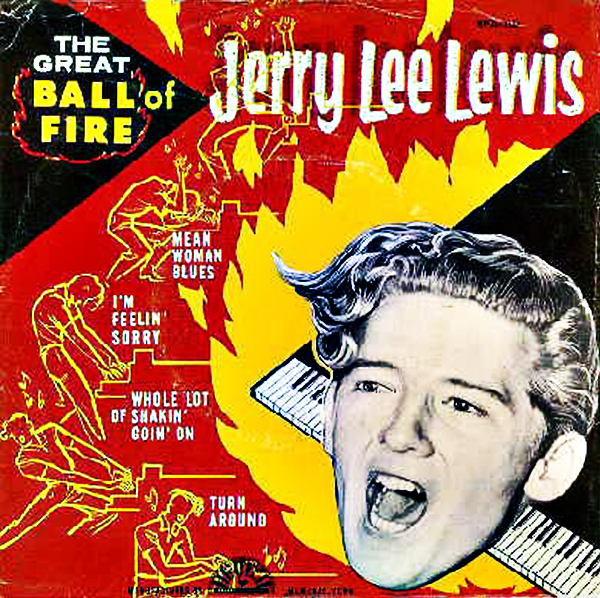
“Great Balls Of Fire”  - Jerry Lee Lewis
- Jerry Lee Lewis
Album: Great Balls Of Fire
Released 1957 
Otis Blackwell, a prolific songwriter who wrote many hits for Elvis Presley, wrote this song with Jack Hammer, who at one point was a member of The Platters. Blackwell died in 2002 at age 70.
“Great Balls Of Fire”  became Jerry Lee Lewis' signature tune, a perfect fit for his incendiary style. “A person tells at least a little bit about himself in any song he cuts”, Lewis said years later.
became Jerry Lee Lewis' signature tune, a perfect fit for his incendiary style. “A person tells at least a little bit about himself in any song he cuts”, Lewis said years later.
Like Lewis' previous hit,
“Whole Lotta Shakin' Goin' On”  ,
this song is filled with sexual innuendo (“let me love you like a lover should...”), which was shocking for a southern musician in 1957. Lewis grew up in a religious household and was conflicted over whether or not he should record the song. He and Sun Records owner Sam Phillips argued as Phillips tried to convince him to sing it. Tape was rolling during the spat and the exchange can be heard on some Sun Records collections.
,
this song is filled with sexual innuendo (“let me love you like a lover should...”), which was shocking for a southern musician in 1957. Lewis grew up in a religious household and was conflicted over whether or not he should record the song. He and Sun Records owner Sam Phillips argued as Phillips tried to convince him to sing it. Tape was rolling during the spat and the exchange can be heard on some Sun Records collections.
“I thought it was funny because I could see both of them”, recalled house drummer JM van Eaton to Uncut magazine April 2012. “Sam's as serious as he could be, and Jerry's as heated as he could be.”
“Great Balls Of Fire”  made the Top 5 on the Pop, R&B, and Country charts simultaneously with
“Whole Lotta Shakin' Goin' On”
made the Top 5 on the Pop, R&B, and Country charts simultaneously with
“Whole Lotta Shakin' Goin' On”  .
Both hit #1 on the Country chart, and
“Great Balls Of Fire”
.
Both hit #1 on the Country chart, and
“Great Balls Of Fire”  went on to sell over 5 million copies.
went on to sell over 5 million copies.
This was released in the UK the same month Lewis married 13-year-old Myra Gale Brown, the daughter of his cousin (and bass player) J.W. Brown.
At the time, Lewis was headlining shows with Buddy Holly and Chuck Berry, but when the UK press found out, public outrage forced Lewis to leave the country. Back in the States, his career faltered as radio stations refused to play his records and stores refused to sell them.
In the UK, a similarly raucous version by the female singer Georgia Gibbs was released in 1957 before Lewis' version was issued. It didn't chart, and Jerry Lee's recording became a huge hit, topping the UK chart and becoming the first Sun Records recording to score there.
One of the many rock stars this song influenced was Eric Clapton, who said:
“I remember the first Rock & Roll I ever saw on TV was Jerry Lee Lewis doing ‘Great Balls of Fire’ That threw me - it was like seeing someone from outer space.”
In 1989, Dennis Quaid portrayed Lewis in the movie “Great Balls Of Fire”, which told the story of his life.
The film took a few liberties, including a scene where Lewis sets his piano on fire while performing this song - a tale often told by Lewis but never verified.
In America, the song was released on November 11, 1957, just one day before the movie Jamboree hit theaters. Lewis performed the song in the film, which gave it great exposure. Other singers appearing in the movie were Carl Perkins, Fats Domino and Frankie Avalon.
In the movie Top Gun, “Goose” (Anthony Edwards) and “Maverick” (Tom Cruise) sing this while “Goose” plays a piano that still sits at the Kansas City Barbeque Restaurant in San Diego, California where the scene was filmed.
The song was reprised in the sequel, Top Gun: Maverick, performed by Miles Teller, who plays Rooster Bradshaw, son of Goose.
Dolly Parton made “Great Balls Of Fire” the title track to her 1979 album. Her cover was used in the 1985 Miami Vice episode “Golden Triangle (Part I)”.
Other artists to cover the song include Conway Twitty, “Sha Na Na”, “Mae West”, Rolf Harris and the “Misfits”.
Jackée Harry and Rodney Dangerfield sang this in the 1992 comedy “Ladybugs”. Other movies to use the song include:
“Priest” (1995)
“Naked Gun 33 1/3: The Final Insult” (1994)
“BlackJack” (1990)
“The Delinquents” (1989)
“Stand by Me” (1986)
“American Hot Wax” (1978)
Continued ...
MORE SONGS

1956
“I’m on Fire”  Live
Live  Video
Video 
1957
“Great Balls of Fire”  Live
Live  Video
Video 
“Whole Lotta Shakin’ Going On”  Live
Live  Video
Video 
“Mean Woman Blues”  Live
Live  Video
Video 
“Great Balls of Fire” - Jerry Lee Lewis 1957 Continued ...
Jerry Lee Lewis official site (Jerry Lee Lewis Discography) / Rock & Roll Hall of Fame / Billboard / All Music / Song Facts /
Ultimate Classic Rock / Jerry Lee Lewis
Image: “ Great Balls of Fire (album)” by Jerry Lee Lewis
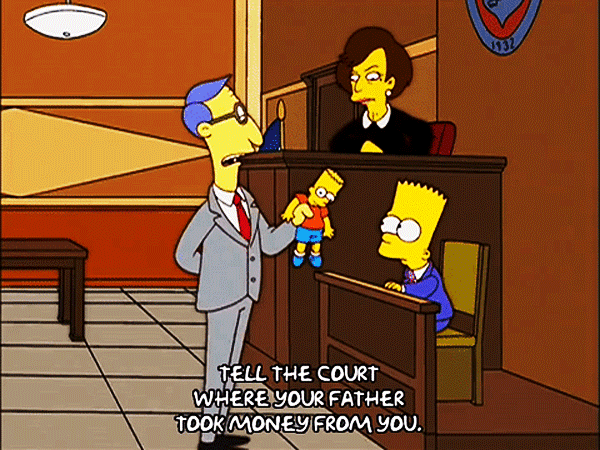
Trivia
● What Latin phrase is used meaning “an attorney representing a client free”?
Answer to Trivia
READ MORE: Georgetown Law.edu
● Who was dipped by the heel in the River Styx to give him invulnerability?
Answer to Trivia
READ MORE: Encyclopedia Britannica
● If you suffer from epistaxis what is wrong?
Answer to Trivia
READ MORE: Cleveland Clinic.org
● What is Lambeau Field's nickname?
Answer to Trivia
READ MORE: Packers.com

A Test for People Who Know Everything
From the Jeopardy Archives Category - “THE ILIAD” ($200)
“Thought to contain material transmitted orally over centuries, the “Iliad” is attributed to this poet.”
Answer to Jeopardy READ MORE: MIT.edu
From the Jeopardy Archives Category - “THE ILIAD” ($400)
“In Book 3 Menelaus fights Paris, who ran off with this wife.”
Answer to Jeopardy READ MORE: MIT.edu
From the Jeopardy Archives Category - “THE ILIAD” ($600)
“There's quite a bit of graphic violence, as when Patroclus kills a Trojan with this long weapon, then hauls him up on it like a fish.”
Answer to Jeopardy READ MORE: MIT.edu
From the Jeopardy Archives Category - “THE ILIAD” ($800)
“The main character & the greatest Greek warrior, he leads the Myrmidons against the Trojans.”
Answer to Jeopardy READ MORE: MIT.edu
From the Jeopardy Archives Category - “THE ILIAD” ($1,000)
“This Trojan warrior is saved by Aphrodite, or there might never have been that epic by Virgil.”
Answer to Jeopardy READ MORE: MIT.edu

Joke of the Day

“Little Johnny”
At school, Little Johnny was told by a classmate that most adults are hiding at least one dark secret, and that this makes it very easy to blackmail them by saying, “I know the whole truth.”
Little Johnny decides to go home and try it out.
He goes home, and as he is greeted by his mother.
He says, “I know the whole truth.”
His mother quickly hands him $20 and says, “Just don't tell your father.”
Quite pleased, the boy waits for his father to get home from work, and greets him with, “I know the whole truth.”
The father promptly hands him $40 and says, “Please don't say a word to your mother.”
Very pleased, the boy is on his way to school the next day when he sees the mailman at his front door.
The boy greets him by saying, “I know the whole truth.”
The mailman immediately drops the mail, opens his arms, and says, “Then come give your daddy a great big hug!”.


































